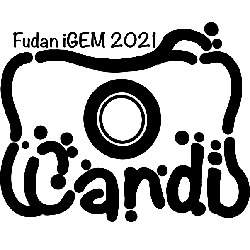Difference between revisions of "Part:BBa K3790003"
TiTong Fudan (Talk | contribs) (→Introduction) |
|||
| Line 7: | Line 7: | ||
[[File:T--Fudan--ccic8-transparent-logo.png|100px|right|2021 Fudan]] | [[File:T--Fudan--ccic8-transparent-logo.png|100px|right|2021 Fudan]] | ||
| − | to | + | sso10b is a double-stranded binding protein from ''Sulfolobus solfataricus'' (the same species as [https://parts.igem.org/Part:BBa_K3790002 where Sso7d from]), which is close to Sso7d in length and structure. We speculate that it may have a similar function to enhance DNA polymerase activity as Sso7d. |
__TOC__ | __TOC__ | ||
| − | |||
===Usage and Biology=== | ===Usage and Biology=== | ||
Revision as of 16:21, 21 October 2021
Sso10b
Introduction
sso10b is a double-stranded binding protein from Sulfolobus solfataricus (the same species as where Sso7d from), which is close to Sso7d in length and structure. We speculate that it may have a similar function to enhance DNA polymerase activity as Sso7d.
Usage and Biology
Experimental Results

Figure 1. Oligo assembly by PCR. It is generally used to construct completely new or special-purpose DNA. This method may have the disadvantage of a high mutation rate when operated. Once, we had to sequence nine clones of the same construct to get a single correct one. The reason for this is most likely due to complex annealing and amplification. We suggest to have 10-15 rounds amplification without F1 or R1 primer, then add those two primers to have another 25 rounds. Must use high-fidelity enzymes for this method. Due to the pricing, we always use 60bp primers, 58 overlapping annealing temperature, to assemble 300-500bp DNA fragment.
The length of albA1 DNA was 288 bp, which is approximately 300 bp after adding homology arms to both ends for PCR cloning. We isolated the DNA of interest by gel extraction for subsequent reactions.

Figure 2. Assembled DNA binding proteins, albA1, S.ssb, E.ssb. The first lane was loaded with DNA ladder, sizes were marked on the image. The brightest band of 750 bp was about 100 ng, and other bands about 50 ng. Lanes with correct sized amplified DNA were labeled. After PCR cloning, several bacterial clones were picked, grew into cultures and sent for Sanger sequencing. Then, we verified the sequencing results, and used the correct ones for further experiments.
Reference
Sequence and Features
Assembly Compatibility:
- 10COMPATIBLE WITH RFC[10]
- 12COMPATIBLE WITH RFC[12]
- 21COMPATIBLE WITH RFC[21]
- 23COMPATIBLE WITH RFC[23]
- 25COMPATIBLE WITH RFC[25]
- 1000COMPATIBLE WITH RFC[1000]

